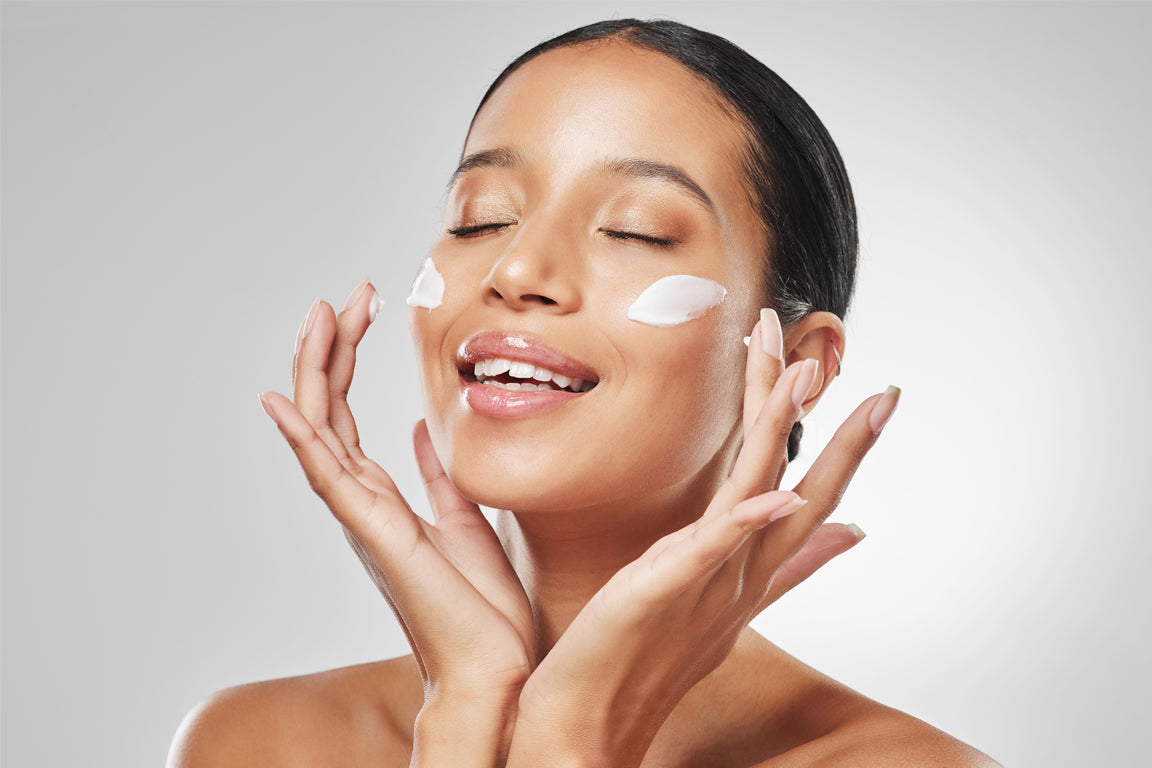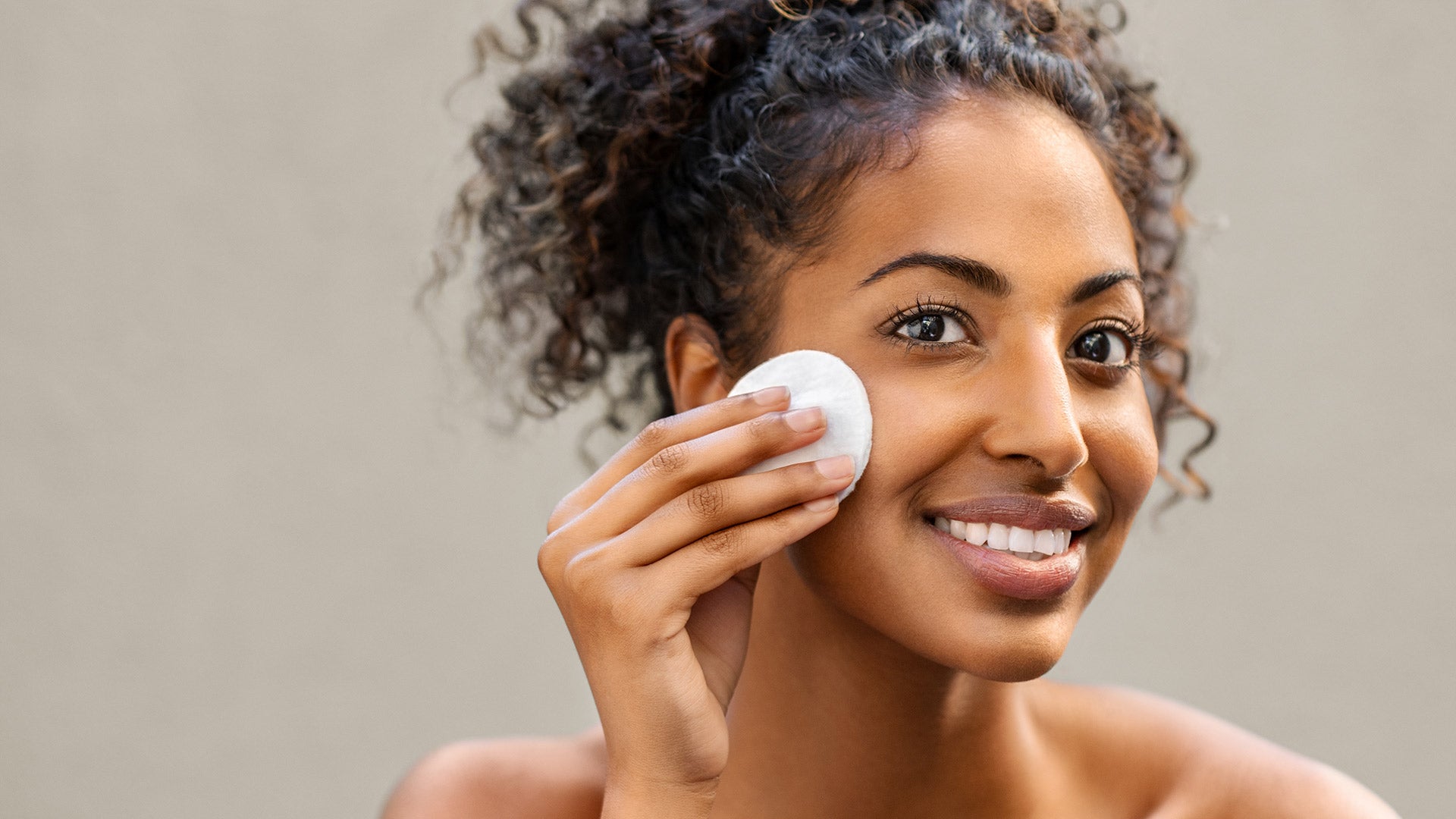In this blog we’ll cover:
- The impact of ingredients in sunscreens
- The FDA’s involvement in SPF regulation
- Components to seek out in sunscreen
Odds are, you’ve heard it before – that sunscreen is essential for protecting you from skin cancer, burning, and photoaging. But what you may not know is that not all sunscreens are created equal. So what is an ideal SPF to keep your skin safe in the summer sun?
On The Skin Report podcast, Dr. Simran Sethi, an Internal Medicine doctor and Founder of RenewMD medical spas and Skin by Dr. Sethi provides a deep dive into the wide world of sunscreens and UV protection. Read on to learn more about her insights on the best ingredients to look for in a sunscreen formula so that you can choose the best SPF for summer 2023!
Why Ingredients Make An Impact
As with any skincare product, the ingredients included in sunscreen can determine the quality and usefulness of that formulation. Fortunately, you don’t need to be a dermatologist or cosmetic chemist to know which SPF products will provide the most protection for your skin. Instead, keep a lookout for products with the right ingredients.
Many different SPF products are available on the market today, which means you can choose from a vast array of options. But to choose a high-quality product, you will need to look at the active ingredients within the formulation. So within this article, we’ll focus on breaking down the best components to look for in a sunscreen that is effective, FDA-approved, and eco-friendly!
What The FDA Has To Say
On the podcast, Dr. Sethi educates listeners about the best ingredients, citing guidance from the US Food and Drug Administration. The FDA’s involvement in regulating sunscreens is important, as sunscreen is a form of skin cancer prevention.
SPF products in the United States must be tested in FDA labs to ensure their safety and effectiveness. This means that the ingredients in these sunscreens are continuously reviewed!
While some SPFs, known as “chemical” sunscreens, work by absorbing into the skin to provide long-lasting coverage, the FDA’s safety rating for these products depends on whether their chemical absorption in the body falls below 0.5 nanograms per milliliter. Unfortunately, some chemical sunscreen ingredients don’t have enough data to indicate whether they are helpful or harmful.
For example, many chemical barrier sunscreens contain Octocrylene, an ingredient that has been shown to increase skin sensitivities and is closely linked to causing allergic reactions in children. Although the ingredient can be irritating, especially for users with sensitive skin, it is often used as a common ingredient in chemical waterproof sunscreens.
Eco-Friendly Options
So you know now that chemical sunscreens can contain ingredients that may irritate the skin but are still up on shelves. However, chemical sunscreens can also contain ingredients that are harmful to the environment.
Oxybenzone and Avobenzone are common ingredients in chemical SPF formulations. However, they are both in a class of chemicals called benzophenones and have been banned in Australia and Hawaii due to their destructive effects on ocean life.
These chemicals contaminate ocean water and have led to the killing of coral reefs. According to Dr. Sethi, the effect of these chemicals on the ecosystem should make users think twice about applying such products on their delicate skin, especially since chemical sunscreen’s mechanism of action is to absorb into the skin.
Chemical sunscreens with these ingredients have been shown to absorb into the bloodstream. The FDA regulates the amount of chemicals that can be absorbed into the skin, and Oxybenzone has been found in breast milk at levels 180 times what the FDA recommends.
Effective SPFs
Summertime means warm days, outdoor recreation, and dips in the pool. But, of course, these activities take place in the sun, and the last thing you want is to wait for your sunscreen to take effect before starting your day.
Chemical sunscreens must be absorbed within the skin to take effect. Unfortunately, this process can take time. This means that people who use chemical sunscreens may need to wait until about 30 minutes after application to have complete protection from UV rays.
Because of this, Dr. Sethi recommends using “mineral” sunscreens to protect your skin from sun rays all day. While chemical sunscreens take time to become effective, mineral formulations are protective immediately and can help block harmful UV rays.
What Ingredients Should You Look For In A Sunscreen
Now that you know more about the chemical ingredients to avoid in sunscreens, what should you look for instead?
Well, Dr. Sethi is a big advocate of mineral sunscreens. Rather than using the chemical ingredients we discussed earlier, these products contain ingredients that sit on top of the skin and block UV rays from coming in contact with its surface. Something to look for that exists in many mineral formulations is zinc oxide, an ingredient that the FDA categorizes as having sufficient clinical data to be deemed safe and effective.
A sunscreen won’t make you indestructible against UV rays. However, using a 30 SPF and reapplying it every two hours will protect your skin in direct sunlight. Remember, all skin requires UVA/B and HEV protection through sunscreen, regardless of skin type, tone, or age. By providing extra security to your skin, sunscreen helps you avoid UV rays’ photoaging and pigmentation effects and prevent skin cancer.
At the end of the day, the best sunscreen is one that keeps your skin protected from UV rays. Therefore, the most important factors to look for in a sunscreen product are an SPF greater than 30 and protection against UVA and UVB rays.
To learn more about sunscreen ingredients, the FDA, and eco-friendly SPF products, tune in to Season 2, Episode 6 of The Skin Report podcast!



